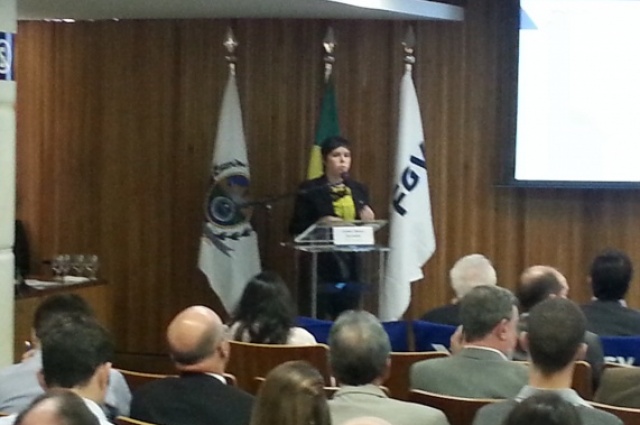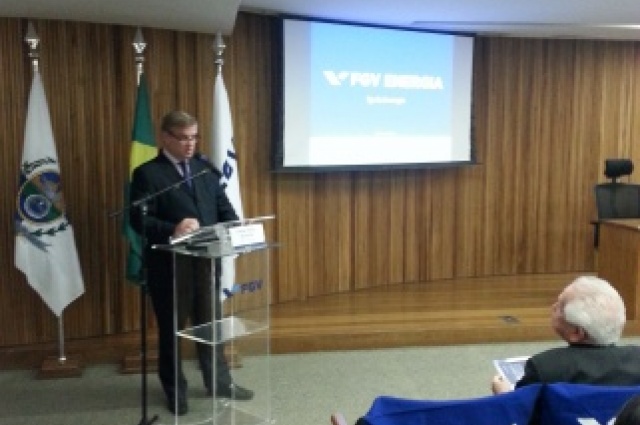FGV Energia launches a new study on distributed generation and advocates changes in incentives regulation





Source: Newsletter Petronotícias - by Luigi Mazza
Amid the diversification in Brazilian matrix and the emergence of new markets, this is a time for industry renewal. While it has been growing at competitive costs, the distributed energy resources sector (DERs) now targets concrete changes in the current rates model in order to enter a new development phase in the country. The objective is to balance government incentives and distributors’ demands, which may be harmed in the medium term with the exemption of charging on consumers that use distributed sources. According to FGV Energia consultant, Paulo Cunha, the change is based on the separation between power purchase and network use rates, which would allow encumbering consumers in a more precise way, thus maintaining the payment of service for distribution companies. The agenda is one of the centerpieces for the new FGV Energia Distributed Energy Resources Booklet, which will be launched this Wednesday (15) and seeks to outline the main development targets for the development of this market within the next few years, focused on the energy efficiency, energy storage and demand management segments. Among the document guidelines, Cunha states the development of a financing model for the sector projects and technology incentive, which may take a key role in an even greater expansion of resources distributed in the national market.
What are the main topics provided by the new booklet?
We addressed the convergence between distributed energy resources and consumer in the Booklet. We realized that, in addition to distributed generation, there is a series of supplementary resources to be used. They are energy storage, energy efficiency and demand management. The set including these four factors, including generation, provides a big change perspective in the market since, traditionally, the sector has centralized source and consumption. As we are urging for these resources, this will be changed. The system operation should change in order to fit these resources, which must be increasingly generous.
What are the changes caused by the expansion of these resources?
For being distributed resources close to the market, they make consumers much more pro-active. Before they would passively consume or not, but now the load can be moved and decisions can be made on the investment in more efficient equipment. They start to have a much more complete relationship as they can manage their consumption and energy production.
What is demand management?
Management is the distribution of energy use throughout time. Instead of consuming at a certain time due to the rate, people may start to move the demand and consume at other times. Through such management, standardizing consumption and stop paying for the power at more expensive times when there is a concentration of demands is possible. When people are encouraged to move their load to less critical hours, they stop pressuring the system.
How is the energy consumption moved?
If consumers have automatic load selection equipment that can be programmed, they have a simpler management. It is an automatic trigger. This brings up one of the main points in our research, which is technology. Technological advances have been very important, and smart networks call the attention today. These are devices that enable making choices involving production and processing at the same time, which needs to be done in an automated way. The research shows a very clear relationship between resources and such areas, which allow the communication with the distributor’s center.
Are demands for this technology growing in Brazil?
Demands are growing according to the technology progress and reduced costs necessary for investment, but they are still incipient. Some regions have shown growth, but not in large scale yet.
What are the main challenges for the sector in the Brazilian market nowadays?
The most important ones are the incentives, which are in the center of it. Also, the need for financing and technology development is still under maturation. These are the major challenges to be faced. In addition, it is still noted that the emergence of these resources should change the energy distribution business model. We have a formatted distribution for a certain type of industry, with centralized production. As this evolves with decentralized sources and active consumers, changing the business will be necessary. This will cause a change to services remuneration, which has been already happening in the world.
How would you assess the Brazilian incentive policy for distributed energies?
The model used to encourage distributed energy in Brazil makes it available for the distributor when the energy is produced. This system exists globally and is very simple, which is an advantage, thus facilitating technology implementation. However, the previous rate system was kept in this process. While the number of distributed energy consumers is small, this is not a problem, but as this number increases we may face an imbalance. Reviewing the rates model is necessary for each consumer to remunerate what he/she demands from the network. As progress happens, the encouragement structure will be enhanced to allow for continuing expansion of the generation. The own regulation provides for its review until 2019, further assuming that it can be corrected in case of such type of failures.
What is the most feasible model for this new rates step?
One of the first steps is to change the structure of group B rates, which are added volumetrically and include both acquired energy and available service in its price. Rates need to be separated, one part remunerating the energy and the other, the service. Thus, someone that produces will stop paying for the energy, but will pay to use the network. This model already exists for larger consumers in Brazil, as shopping malls and factories.
How do you think the Government has been opening this discussion?
Even the regulatory agency has made a lot of progress. We have the Distributed Generation Regulatory Program (PROGD) discussing and implementing incentives to develop the generation. So, there is space for discussion. Once these changes are very important, they will not be made immediately.
What are the biggest difficulties in the sector’s financial scope?
Today, we do not have a finished and ready finance model with an already formatted line yet. There are some incentives and the official agencies already study the topic, but we do not have an investment line for such resources. We have for energy efficiency, but not for distributed generation, storage and demands management. There is such need, and we will have to come up with new financial products to fulfill this function.
Does the distributed resources sector already count on maturation to join the market?
I guess so. Out of four resources, the most developed one is distributed generation, especially through photovoltaic solar generation. Efficiency is also ahead as it can have investment and focusing on public policies to boost this source is enough. We already have sufficient technology for this and will have to make institutional progress to change it in effective conditions. Some are more complex, as storage, which are still in a less mature level of technology. This will have to be improved, but there is already space for diffusion.
